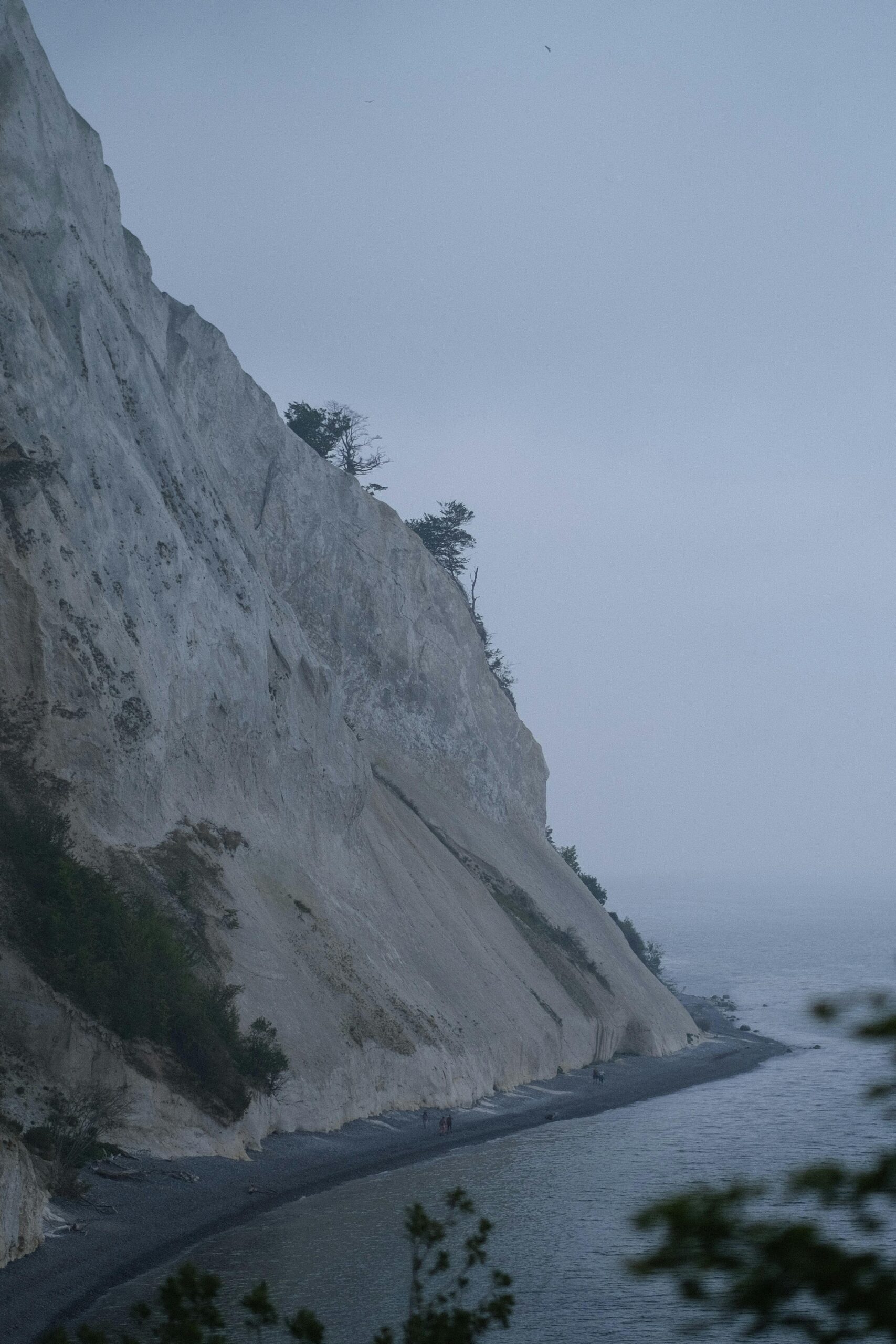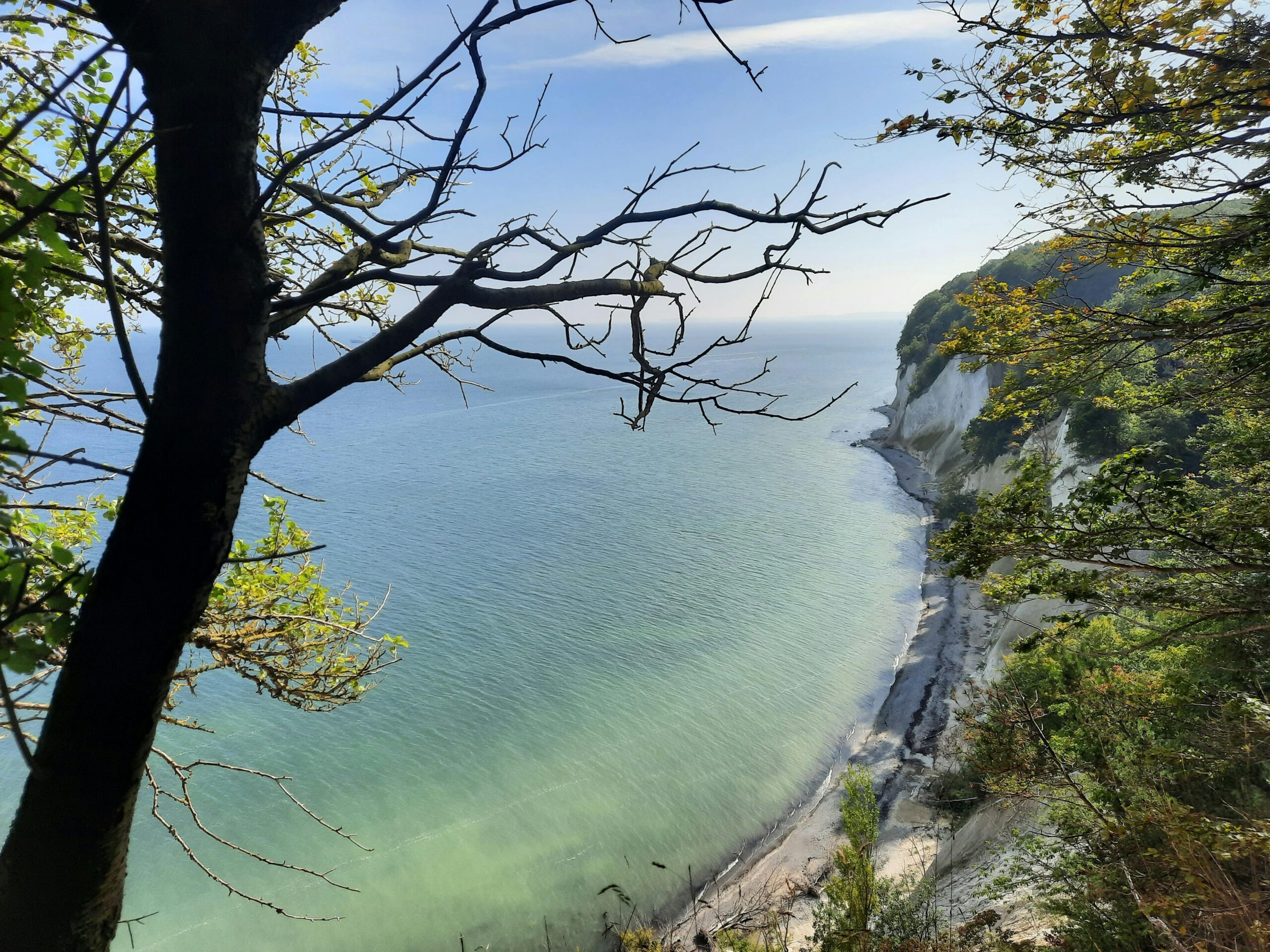Stevns Klint, a UNESCO World Heritage site, is a magnificent 15-kilometer-long chalk cliff located on the eastern coast of the Danish island of Zealand. This stunning natural landmark is not just a geological wonder but also a site of immense scientific importance, offering a unique window into one of the most significant events in Earth’s history: the Cretaceous-Paleogene (K-Pg) extinction event. The cliffs are famous for their exposed geological layers, which tell the story of the last dinosaurs. The most crucial layer is the “Fish Clay” (Fiskeler), a thin, dark band of clay rich in iridium—an element rarely found on Earth’s surface but abundant in asteroids. This layer, precisely at the boundary between the Cretaceous and Paleogene periods (66 million years ago), is the key piece of evidence supporting the theory that a massive asteroid impact caused the extinction of the dinosaurs and most other life forms on the planet. The high concentration of iridium in the clay strongly suggests that the impact created a global dust cloud, blocking out the sun and leading to a catastrophic collapse of the food chain. At the top of the cliff stands the charming Højerup Old Church (Højerup Gamle Kirke), a historical focal point of the area. Built around 1250, the church has a dramatic history closely tied to the eroding cliff face. Over the centuries, the sea has relentlessly gnawed at the chalk, causing parts of the churchyard to crumble into the waves. In 1928, a significant portion of the church’s choir fell into the sea, leaving the remainder of the building precariously perched on the edge. This event led to the construction of a new church nearby, but the old one was preserved as a poignant reminder of the powerful forces of nature. Today, visitors can still enter the old church and look out from a platform where the chancel once stood, offering a breathtaking and slightly terrifying view of the cliff and the sea below. As for our visit, we were delighted to find excellent parking facilities, making our exploration of the area both easy and enjoyable. The parking lot at the Stevns Klint Museum was very convenient, and we also found a great spot near the old lighthouse. Both were clean and well-maintained. The parking near the old church is also superb, though it is a paid lot. For those traveling by camper van, there is a dedicated motorhome area in a nearby village, which is a great option. For anyone in the area looking for more to explore, we can highly recommend Sagnlandet Lejre and Køge Miniby. Sagnlandet Lejre is an open-air archaeological museum where you can experience Danish history from the Stone Age to the Viking Age through reconstructed settlements and hands-on activities. It’s an immersive and fascinating experience for all ages. Meanwhile, Køge Miniby is a charming open-air museum where you can admire miniature versions of Køge’s historic buildings. It’s a testament to local craftsmanship and a delightful way to see the town’s architectural heritage on a small scale. Both of these attractions are well worth the visit and complement the natural and historical beauty of Stevns Klint perfectly.

